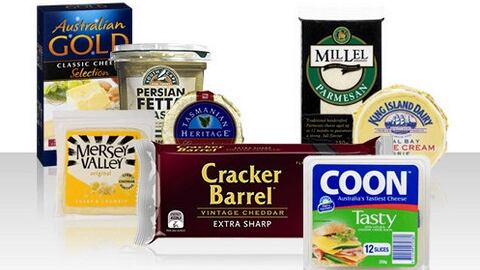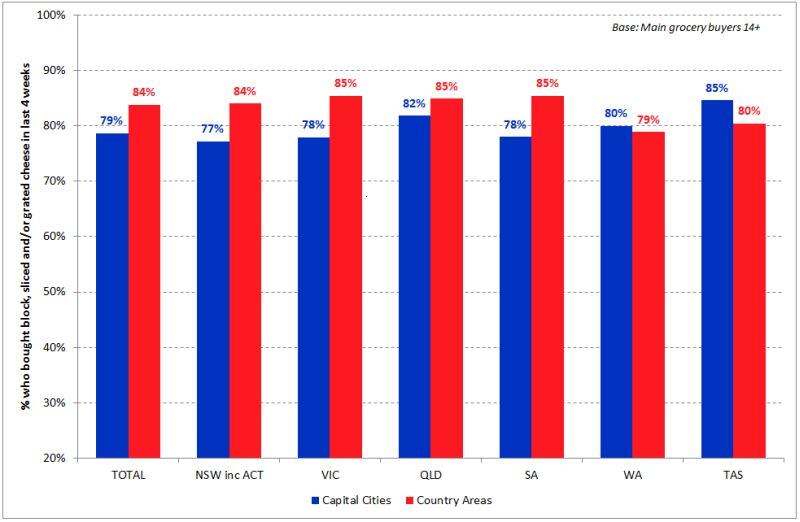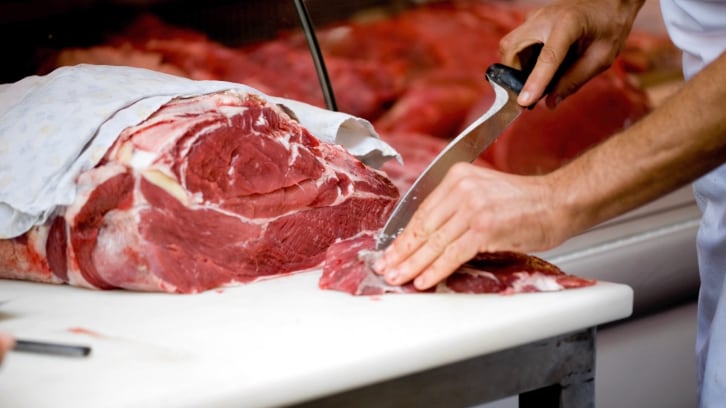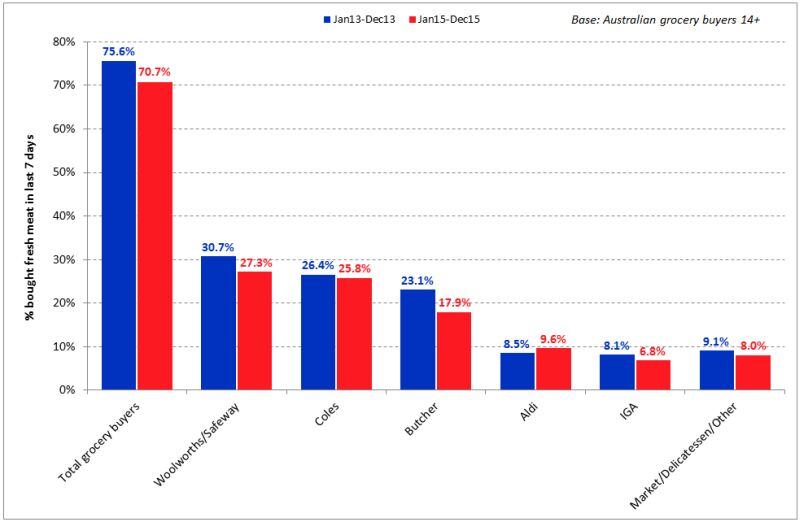The surprise finding, published in the journal Nature, has prompted one University of Melbourne researcher to issue a warning about putting faith in so-called fad diets with little scientific evidence.
Lead author Sof Andrikopoulos said such diets were not recommended, particularly for those who were already overweight and led sedentary lifestyles.
He said media hype around extreme diets, often driven by the tabloid media and reality TV shows, was leading to more people trying fad diets backed by little evidence.
In people with pre-diabetes or diabetes, the low-carb, high-fat paleo diet could be particularly risky, he said.
“Low-carbohydrate, high-fat diets are becoming more popular, but there is no scientific evidence that these diets work. In fact, if you put an inactive individual on this type of diet, the chances are that person will gain weight,” Associate Professor Andrikopoulos said.
“We are told to eat zero carbs and lots of fat on the paleo diet. Our model tried to mimic that, but we didn’t see any improvements in weight or symptoms. In fact, they got worse. The bottom line is it’s not good to eat too much fat.”
His team originally set out to test whether high-fat, low-carbohydrate foods would benefit people with pre-diabetes by taking two groups of overweight, pre-diabetic mice and putting one group on a paleo-type diet.
these mice were switched from a 3% fat diet to a 60% fat diet, while their carbs were reduced to just 20%.
After eight weeks, the paleo group gained more weight, their glucose intolerance worsened, and their insulin levels rose. The group also gained 15% of their body weight, and their fat mass doubled from 2% to almost 4%.
“To put that in perspective, for a 100kg person, that’s the equivalent of 15kg in two months. That’s extreme weight gain,” Professor Andrikopoulos said.
“This level of weight gain will increase blood pressure and increase your risk of anxiety and depression and may cause bone issues and arthritis.”
The diet would only further increase blood sugar and insulin in someone who is already overweight, and could actually pre-dispose them to diabetes, he added.
Celebrity chef Pete Evans immediately dismissed the Melbourne findings, calling the paleo diet “a bloody good place to start” for the near 1m Australians with type-2 diabetes, in a Facebook rant.
“The amount of Australians that have reached out to me to say how the paleo way have [sic] helped their type 2 diabetes is amazing, so much so that a lot are off all their medication, proves and illustrates that this way of life is working for so many people,” Evans wrote.
Paleo devotee and My Kitchen Rules judge questioned the researchers’ motivations and the veracity of their findings, and also criticised their tests on mice.
“The media and also the health organisations are once again clutching at straws. This time it is a study done on Mice - yep you heard that right...mice! You do have to ask the question...who is funding this study, does this university or the professor have any ties with any pharmeceutical [sic] or multinational funding?” he added.
More stories from Down Under…
Country Aussies prefer cheese, plain label comes tops Down Under
Australians who live in the country are generally more likely than their city-dwelling counterparts to buy cheese in most states, a survey has found.

It also learnt that supermarket brands were the most popular choice, with Bega in second place.
Queensland, meanwhile, takes the national preference for “plain packaging” to another level, with residents in both rural and urban areas being more than twice as likely to opt for supermarket brands as they are for Bega.
“Block, grated and sliced cheese account for the lion’s share of cheese purchases in Australia, with supermarket brands dominating each category, ahead of second-most popular brand Bega,” said Michele Levine of Roy Morgan Research.

“As we have reported previously, cheese sales are gradually declining around Australia and across most age groups. It is therefore crucial for brands to know where their key consumers are located, and what health and dietary preferences and concerns motivate their purchasing decisions.”
Levine speculated that country Australians were more partial to cheese than city dwellers as they had more traditional tastes in food, were less likely to be concerned about their cholesterol and opted for more calcium in their diets.
“All of these attitudes would impact on their cheese-buying decisions,” she added.
Fewer meat-eaters prompts decline of the specialist Aussie butcher
Another survey has outlined the decline of the traditional butcher against against a fall in the number of meat-eaters, with the proportion of Australians buying their fresh meat from a specialist falling by almost 5% in just three years.

Between 2013 and the end of 2015, this figure dropped from 23.1% to 17.9%, Roy Morgan Research found. Over the same period, the overall proportion of Australians shopping for fresh meat also fell, from 75.6% to 70.7%
Aldi was the only major supermarket to have made any real gains in fresh meat sales over the last few years, with 9.6% of weekly meat shoppers last year, up from 8.5% in 2013.
Coles remained relatively stable, but Woolworths/Safeway (30.7% to 27.3%) and IGA (8.1% to 6.8%) experienced declines; as did markets and delicatessens (9.1% to 8.0%).
Butchers, however, have seen the most significant decrease in customers, though they still hold a 23.5% share of the total fresh-meat market, due to the amount their shoppers spend in an average week of A$37 (US$26.50).

This is just ahead of the average fresh-meat spend of A$34 by shoppers at markets and delicatessens.
While Woolworth/Safeway accounts for a larger slice of the market (27.3%), their fresh-meat customers spend substantially less—at a weekly average of A$27 per shopper. This is also the case for those who buy their meat at Coles (A$25/23.2% market share) and IGA/Foodland (A$22/5.4% market share)
With its customers spending a weekly average of A$22, Aldi’s dollar share of the fresh-meat market is currently 7.6%.
“Despite their shrinking customer base, butchers are retaining a decent share of the overall fresh-meat market due to the above-average amount spent by those grocery buyers who continue to shop with them. But unless they can stem or reverse the decline in shoppers, it seems inevitable that butchers’ market share will erode,” said Roy Morgan’s Andrew Price.
“The supermarket situation is a little different. The proportion of grocery buyers purchasing fresh meat is decreasing at a slower rate and the customer volume is much higher. Whereas buying from a traditional butcher involves making a special trip, purchasing one’s meat at the same time as the rest of one’s groceries is much simpler.”
Woolworths is currently changing the role of its staff butchers, by bringing them to the front of store to sell pre-packaged meat and interact with customers rather than plying their trade out the back. This, according to price, suggests how the supermarket chain is pre-empting further declines.
“But with the number of Australians who are eating less red meat these days now surpassing 10.2m people, and the number of those pursuing a totally or almost vegetarian diet also rising over the same period, butchers and other players in the fresh meat market are facing challenging times,” he added.
Fsanz seeks views on proposed infant formula revision
The antipodean food regulator is calling for public and industry submissions on its proposed approach to revising infant formula requirements in the Food Standards Code.

Steve McCutcheon, chief executive of Fsanz, said the regulator was looking at clarifying some standards to update them with the latest scientific evidence and bring them into line with international regulations.
“This paper covers a range of issues including composition, safety and food technology and labelling,” McCutcheon said.
“We welcome comments from all members of the community, government agencies, public health professionals and industry.”
After assessing submissions, which must be completed by May 17, Fsanz expects to prepare a call for submissions for public release.
